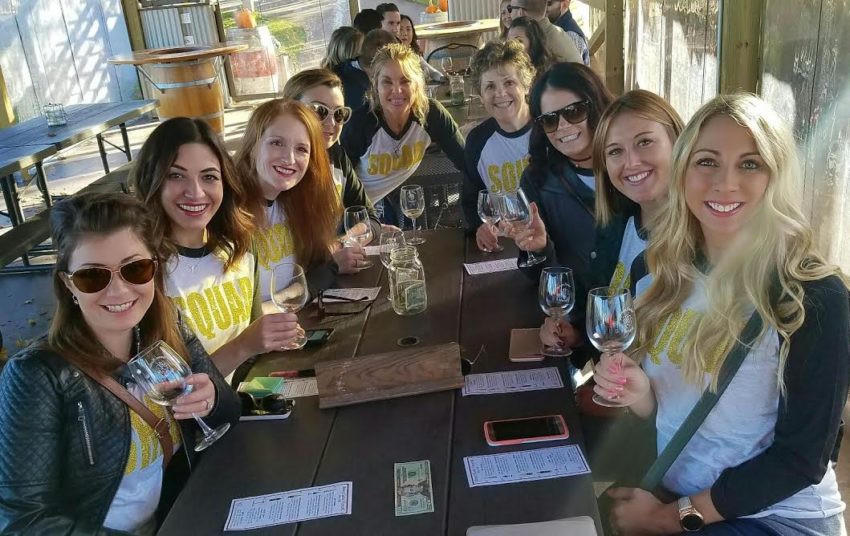Wine Basics: Get to Know What’s in Your Glass!

Learn the Wine Basics
We love the fact that many of our tour guests just love wine. Red or white, dry or sweet, they’re there to enjoy the best grapes Northern Michigan has to offer. Take in the stunning sights found on Leelanau and Old Mission Peninsulas. While knowing about wine isn’t a prerequisite for having a good time on a tour, it often helps our guests learn more about the wine they’re sampling, as well as helps them to define their own pallet.
The Spectrum of White Wines
For the basics, we’ll look at four types of white and red wines, respectively. The best place to start when discussing white wine is the range of body found in whites. For example, think of specific types of wines spread out across different points of a spectrum. On one end of the spectrum, you have wines defined as light and sweet. On the other of the spectrum, you’ll find dry and rich wines.
The light and sweet end of the spectrum of wine, you’ll find Rieslings. You know when people say, “I have a wine headache” after a night of one too many? Chances are, it’s due to overindulging in Rieslings. Rieslings are very high in sugar, and as a result, are noticeably sweeter than other types of white wines. They also are the most translucent type of white wines, meaning they can almost resemble water with a yellow hue at first glance. These wines are light-bodied and have a noticeable presence of floral notes, which is the best way to distinguish them between Chardonnays if you can’t tell by looking at the color of the wine.
If you’re looking at the other end of the spectrum, the driest and richest type of white wine is a Chardonnay. These have much less sugar than Rieslings and are much fuller and opaque in color. Chardonnays are usually described as full-bodied wines, with clear notes of citrus fruits. Chardonnays are widely regarded as being ideally paired with sea foods like lobster and crab; as well as chicken, pork, and light soups.
Two other very common types of white wines are Pinot Gris and Sauvignon Blanc. Pinot Gris is closer to a riesling. Sauvignon Blanc is closer to a Chardonnay in both taste and appearance.
The Spectrum of Red Wines
Similar to white wines, red wines are also placed on a spectrum to define each type of red wine’s taste. On one end of the spectrum, you’ll find a Pinot Noir. Pinot Noir is described as having a light body and being much fruitier than the red wine. On the other end of the spectrum is Cabernet Sauvignon.
A good Pinot Noir, as noted above, is generously fruity, and you’ll usually notice plenty of cherry notes here in Northern Michigan. The color is usually a lighter red color, as opposed to a deep, dark crimson like a Cabernet Sauvignon. Noirs also tend to be a bit on the acidic side, and they pair very well with an assortment of dishes, especially chicken, duck, pork, veal and some sausages. If you have a chance, try pairing a meat and cheese plate with a Pinot Noir on one of your wine tour stops – it’ll be the highlight of your tour!
On the other end of the spectrum is the full-bodied, hearty, crimson red Cabernet Sauvignon. When you think of red wine, chances are you’re thinking of a Cabernet Sauvignon. This is probably the most popular type of wine in the world. Take a taste to understand why. Cabernet Sauvignons boasts a potent finish due to its relatively high alcohol content and full-bodied texture. This hearty grape pairs well with a hearty dish, including heavy roasts of beef, lamb, heavy soups, hard cheeses, and potato dishes. A Cabernet Sauvignon is characterized by its deep red color.
If the Cabernet Sauvignon is too much for you, you can step down an octave by going trying the Syrah, which is a less intense grape, but still similar to the Cabernet Sauvignon. Another popular wine is the Zinfandel, which is closer to a Pinot Noir, expect a bit fuller, more savory, and a darker red color than a Pinot Noir.
Keep Learning!
The wineries in Northern Michigan are famous for having extremely knowledgeable staffs. When you’re on your tour, be sure to ask about different types of wine; how do they pair with food, what notes should you be tasting, when is the vintage, and other things of that nature. Even if you’re not a wine connoisseur, learning about the different techniques is pretty fascinating. Everything from when the grapes are harvested, to how they’re stored, to what they’re stored in can drastically change the taste and texture of any type of wine. There are also blends of different types of grapes, which create drastically different tastes when mixed in different ways, which means there is always a new wine to sample each season.
To put your newly acquired wine knowledge to the test, find a Traverse City wine tour to taste the best wines Northern Michigan has to offer. You can also take a moment to learn some of the finer points of Michigan craft beer to improve your knowledge to cover all of your bases for your tour.
Don’t forget to check us out on Facebook, Twitter, and Instagram for the latest Traverse City wine and beer events, tours, and pictures! You can also get in touch to learn more about our tours by sending an email.